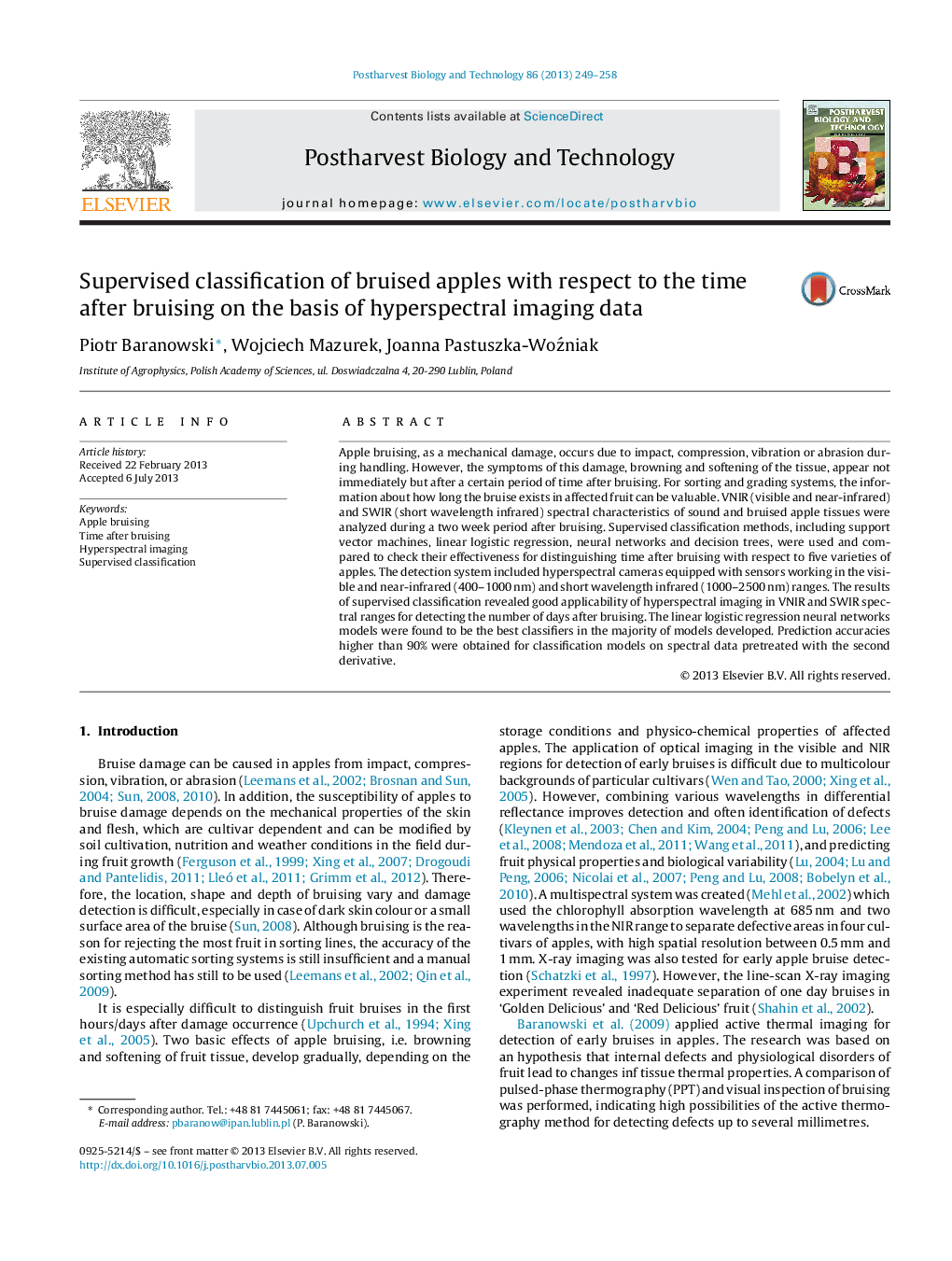| Article ID | Journal | Published Year | Pages | File Type |
|---|---|---|---|---|
| 6378753 | Postharvest Biology and Technology | 2013 | 10 Pages |
â¢Hyperspectral imaging enabled us to distinguish time after apple bruise occurrence.â¢Changes in spectral characteristics for two weeks after bruising were found.â¢The performance of several supervised classification models was compared.â¢The reduction of spectral data was achieved by using the CFS algorithm.â¢Pre-treatment with CFS and 2nd derivative is favourable for prediction accuracy.
Apple bruising, as a mechanical damage, occurs due to impact, compression, vibration or abrasion during handling. However, the symptoms of this damage, browning and softening of the tissue, appear not immediately but after a certain period of time after bruising. For sorting and grading systems, the information about how long the bruise exists in affected fruit can be valuable. VNIR (visible and near-infrared) and SWIR (short wavelength infrared) spectral characteristics of sound and bruised apple tissues were analyzed during a two week period after bruising. Supervised classification methods, including support vector machines, linear logistic regression, neural networks and decision trees, were used and compared to check their effectiveness for distinguishing time after bruising with respect to five varieties of apples. The detection system included hyperspectral cameras equipped with sensors working in the visible and near-infrared (400-1000Â nm) and short wavelength infrared (1000-2500Â nm) ranges. The results of supervised classification revealed good applicability of hyperspectral imaging in VNIR and SWIR spectral ranges for detecting the number of days after bruising. The linear logistic regression neural networks models were found to be the best classifiers in the majority of models developed. Prediction accuracies higher than 90% were obtained for classification models on spectral data pretreated with the second derivative.
